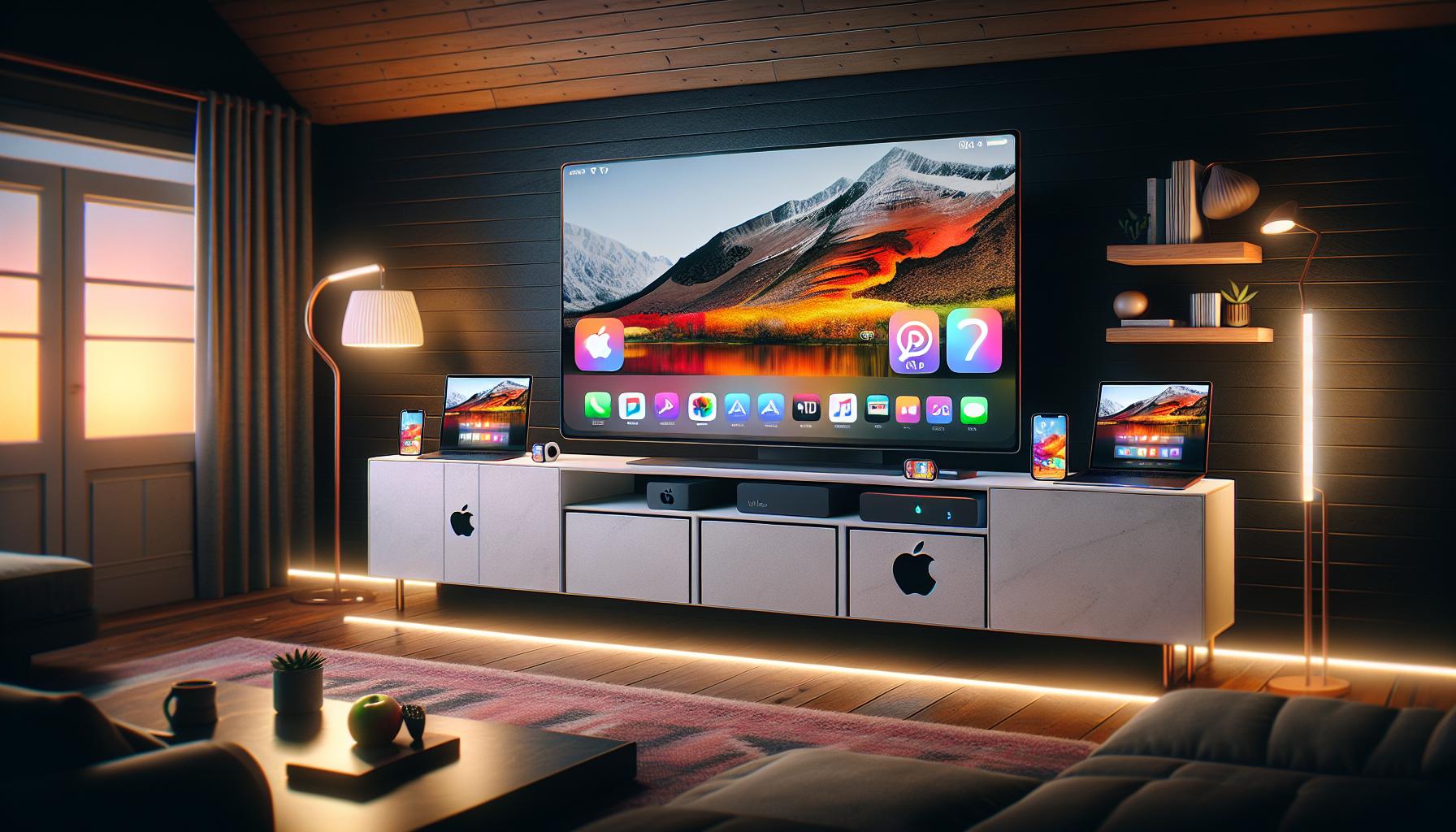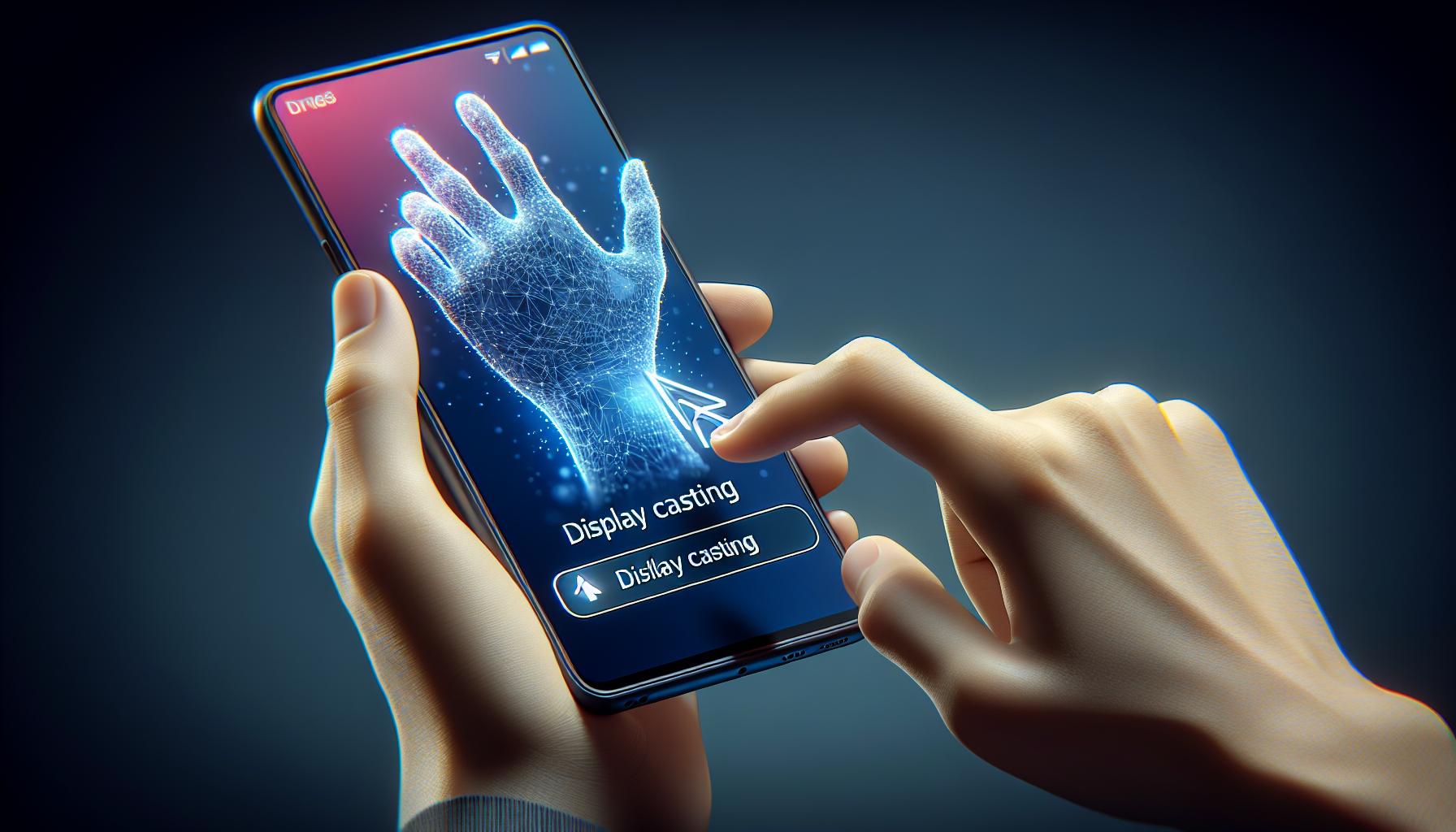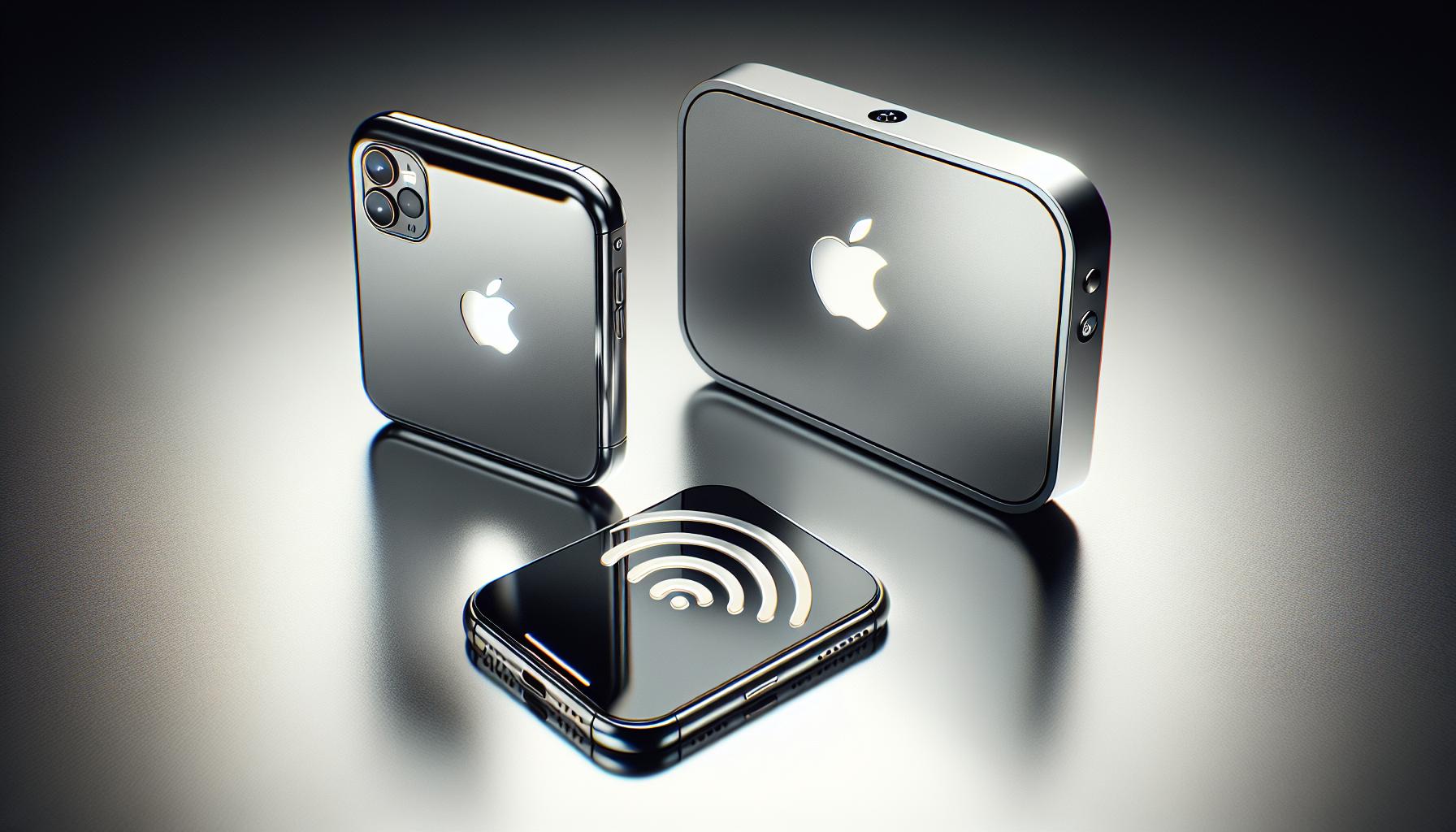Ever thought about mirroring your iPhone or iPad screen on your Apple TV? It's not as complicated as it may seem. This guide will walk you through the process, making it a breeze to share your device's screen with your TV.
In the digital age, your Apple TV can be more than just a platform for streaming Netflix or Hulu. It's a powerful tool that can turn your television into a giant iPad or iPhone screen. Whether you're showing off vacation photos, playing games, or presenting a slideshow, screen mirroring can make it all possible.
Stay tuned as we delve into the steps you'll need to follow to mirror your Apple TV. It's easier than you might think, and before you know it, you'll be casting from your device like a pro.
What is Apple TV
Before diving deeper into the process of mirroring, it's crucial to familiarize yourself with Apple TV. Apple TV isn't just a device. It's a platform that provides you the ability to stream photographs, music, and videos from your iOS device straight to your Television. Initially intended for streaming content, Apple TV has grown to encompass a wider range of functionalities.
Apple TV comes in two models: Apple TV HD and Apple TV 4K. They're small, sleek boxes that connect to your Television through an HDMI cable. They're controlled with a Siri Remote, adding a voice-controlled element to navigation. When connected to the internet, these devices give you access to a plethora of streaming services. From Netflix to Amazon Prime, Hulu to Apple’s very own Apple TV+ service.
There's also the Apple TV app, a standalone service available on select Samsung smart TVs, Amazon Fire TV, and Roku devices. That means you can access your favorite Apple content even without the physical Apple TV device.
One of the stand-out features of Apple TV is AirPlay, a proprietary protocol stack that allows wireless streaming between devices of multimedia content. This is the magic that enables you to mirror your Apple devices on your Television.
If you're into gaming, rejoice! Apple TV isn’t just about streaming videos and music. The introduction of Apple Arcade in the Apple TV realm has become a game-changer. Literally! This gaming subscription service presents you with a wide array of ad-free games.
Having taken a stroll around what Apple TV brings to the table, you now understand why it’s considered more than just a streaming device. Next, we'll delve into the dynamics of how you can utilize its mirroring capabilities.
The Benefits of Screen Mirroring

Before you start mirroring your screen, let's delve deeper into the benefits this versatile feature has to offer.
First of all, screen mirroring gives you a more immersive experience. Who wouldn't love to enjoy their favorite Netflix series or a live sports event on a larger screen? By mirroring your iPhone or iPad to Apple TV, you're able to take your viewing pleasure to a whole new level.
Similarly, mirroring can turn your TV into a giant sketchpad or presentation screen. Let's say you've prepared a presentation on Google Slides. Instead of fitting your hard work inside a small laptop screen during an office meetup, why not project it on a big screen with the help of your Apple TV? A larger display would definitely make it easier for your audience to comprehend. Plus, it's also more professional!
Furthermore, for all you gamers out there, screen mirroring brings a whole new dimension to your gaming experience. With the integration of Apple Arcade, you can now enjoy high-quality games on a widescreen. Features like high-definition visuals and surround sound offer a gaming experience that's beyond compare. It's almost like having a personal arcade at home.
Moreover, if you're someone who frequently makes video calls using apps like FaceTime or Skype, with screen mirroring, you can now do so on a larger screen. Doesn't this bring a sense of proximity, quite literally making your dear ones appear larger than life?
In essence, Apple TV's screen mirroring function offers a richer multimedia experience. Regardless of whether you're streaming video, making a presentation, playing a game, or video chatting, it attends to your needs by providing a bigger and better visual platform.
Understanding AirPlay

Apple's proprietary technology, 'AirPlay', is the force behind screen mirroring on Apple TV. It creates a bridge between Apple devices, allowing content sharing on a big scale.
Imagine, you've skimmed through countless apps, files or slides on your iPhone. Now, you desire to share it for collaboration, or simply to view it on a larger screen. Here comes AirPlay into play. It wirelessly pushes content from your iOS device onto your Apple TV screen. This magical technique of content sharing is known as screen mirroring.
AirPlay isn't limited to just iPhones or iPads. Even if you have a MacBook, AirPlay lets you share your screen with Apple TV. And not just static images or files, streaming videos and music is equally seamless via AirPlay.
Moreover, AirPlay maintains the quality of transfer. High-definition videos retain their clarity. Audio files keep their crispness. No compromise on quality while ensuring a bigger and better view.
In the next section, we'd guide you through the quick steps you'd need to mirror your Apple device to Apple TV using AirPlay.
Step 1: Ensure Compatible Devices

First thing's first, it's crucial to confirm the compatibility between your IOS device and Apple TV. Apple's AirPlay mirrors content from IOS devices like the iPhone and iPad, along with the MacBook to Apple TV. Compatible IOS devices must be an iPhone 4s or later, iPad 2 or later, iPad mini, or iPod touch (5th generation or later). For MacBooks, make sure you're running OSX 10.8 Mountain Lion or later.
Following the device, the next step is to ensure your Apple TV model supports AirPlay. This includes all the models from Apple TV 2nd generation and onwards. This feature, however, won't work with the original Apple TV.
Your devices are half the equation to a seamless mirroring experience. The other half is your home network. AirPlay works with both Wi-Fi and Ethernet connections. However, a Wi-Fi is often more practical as it allows mobility; you can move about freely with your iPhone, iPad, or MacBook.
Configuring your network correctly is essential for a smooth, uninterrupted streaming process. You should connect both your IOS device or MacBook and Apple TV to the same network whether it's Wi-Fi or Ethernet. Failure to link the same network will result in unsuccessful screen mirroring.
Let's recap the compatibility requisites:
- IOS device: iPhone 4s or later, iPad 2 or later, iPad mini, iPod touch (5th generation or later).
- MacBook: OSX 10.8 Mountain Lion or later.
- Apple TV: 2nd generation or later.
- Network: The same for both Apple TV and your IOS device or MacBook.
These are the readying steps that set the stage for what's next - the actual process of mirroring. Now, once you've got your compatible devices and network set, you're ready to delve into the exact steps to mirror your screen to Apple TV using AirPlay. Let's unbox these procedures.
Step 2: Connect to the Same Wi-Fi Network

One critical step in setting up your Apple TV for screen mirroring is ensuring that all the devices are connected to the same Wi-Fi network. This aspect forms the foundation for the communication between your iOS device, MacBook, and Apple TV in the screen mirroring process.
Stick with connecting all your devices at hand to the same network. If your iPhone is connected to the 2.4GHZ range, then make sure your MacBook and Apple TV are connected to the same.
In case you're not quite sure how to connect your devices to the same network, let's break it down.
Connect your iOS device or MacBook
- Navigate to the Wi-Fi settings on your device. You'll more often than not find it in your settings menu under the 'Wi-Fi' tab.
- From the list of available Wi-Fi networks, select the one you want your devices connected.
- You may have to key in a password if the Wi-Fi network is secure. Do so, and hit 'join'.
- Navigate through the main menu and select 'Settings'.
- Click on 'General', and then 'Network'.
- In the 'Network' menu, select 'Wi-Fi'. You should see a list of all available Wi-Fi networks.
- Select the same Wi-Fi network you've connected your iOS device or MacBook, enter the password if necessary, and choose 'Done'.
Stabilizing your network connection for all devices on the same Wi-Fi network is a crucial step in making your screen mirroring endeavor successful. Connection errors or an unstable network could disrupt the mirroring process, affecting the overall experience.
Remember, screen mirroring with Apple TV isn't just about getting the basics right. It's about the little details too, like this one, that combine to provide you with a seamless multimedia experience. Now that we've gotten the wireless connections in sync, let's dive into the next step.
Step 3: Enable AirPlay on Your Apple TV
With a stable Wi-Fi connection all set, it's time to move forward and configure your Apple TV settings. This is an essential part of your screen mirroring journey, as it helps you communicate effectively with your other devices.
Primarily, you'll focus on the AirPlay feature. Now you might be thinking, what's AirPlay? Well, AirPlay is Apple's proprietary system that allows wireless streaming between devices of multimedia content. Here's how you can use AirPlay to enable screen mirroring:
- Grab your Apple TV remote.
- Go to “Settings.”
- Select “AirPlay and HomeKit.”
- Here, ensure that AirPlay is on.
Suppose you face any difficulties or the settings seem different on your TV. In that case, it could be because of your Apple TV's model. Different generations of Apple TVs might have slightly different settings interfaces. But don't worry! The principle remains the same, and the options are always there; you might have to scroll a bit more.
With AirPlay on, your Apple TV has the ability to receive signals from your iOS device or MacBook. It's like opening the gates for other devices to connect, share, and display their content.
Just remember to make sure your device and Apple TV are on the same network. That's the golden rule in this process!
Step 4: Enable Screen Mirroring on Your iOS Device

Congrats on successfully connecting your devices to the same Wi-Fi network and enabling AirPlay on your Apple TV! The next move is engaging the screen mirroring feature on your iOS device. This is the key that'll unlock and facilitate your wireless streaming journey.
First up, make sure your device is compatible. If you're using iOS 12 or later, here's how you'll go about this:
- Swipe down from the upper right corner of your screen to access the Control Center.
- Tap on Screen Mirroring.
- Select your Apple TV from the list of available devices.
- If prompted, enter your AirPlay passcode.
In case you're using iOS 11 or an earlier version, follow these steps:
- Swipe up from the bottom of your screen to open the Control Center.
- Tap on AirPlay Mirroring.
- Select your Apple TV from the list of available devices.
- If necessary, enter your AirPlay passcode.
Hold up! One crucial point that can't be overstated: ensure Do Not Disturb mode isn't enabled on your device. This mode can interrupt the mirroring process, causing possible glitches during the stream.
Befriending patience in this process pays off as well. It's not uncommon for the mirroring to take a few seconds to engage. Hang on and give it a moment before trying again if it doesn't connect immediately.
With screen mirroring in action, now you can relish in the freedom of projecting your favorite content onto the big screen with ease. Let's continue this exploration in the next section.
Step 5: Start Screen Mirroring
Now that you've confirmed compatibility, disabled Do Not Disturb mode, and been patient while screen mirroring engaged, it's time to start screen mirroring. Your big-screen experience is just a few steps away! Here's your simple, step-by-step guide on how to kick start the screen mirroring process:
- Grab your iOS device. Navigate to the control center. Remember, the method of accessing the control center varies, depending on the iPhone model you're using.
- On iPhone X or later and iPad with iOS 12 or later: Swipe down from the upper-right corner to open Control Center.
- On iPhone 8 or earlier and iPad with iOS 11 or earlier: Swipe up from the bottom edge to bring up the control center.
- Once you've opened the control center, you'll see a "Screen Mirroring" option. Tap it!
- You'll notice a list of available devices for mirroring. Select the name of your Apple TV from the lineup.
If you don't see the name of your Apple TV, ensure your iOS device and your Apple TV are correctly connected to the same Wi-Fi network. This step is critical as both devices need to be on the same network for successful screen mirroring.
Once you make the connection, your TV screen should mirror the display on your iOS device. Presto! You're now projecting your favorite content onto the big screen. This mirroring effectively puts your games, photos, videos, apps, presentations, and more on your TV. Isn't that a sight to see?
Some apps might halt screen mirroring or change the aspect ratio while mirroring. If this happens, don’t panic; it's usually the app and not an issue with your Apple TV or iOS device.
Stay with us as we next discuss how to adjust mirroring settings for optimal performance. Stay tuned for even more great info you won't want to miss.
Troubleshooting Tips

When you're embroiled in the middle of an appealing media run, glitches can spoil the experience. Relax! Here's some shorthand wisdom addressing typical issues that arise when mirroring your Apple TV through an iOS device.
Identify your network strength. It's a key factor affecting your mirroring performance. If the Wi-Fi signal is weak or inconsistent, your mirroring may falter or disconnect.
Improve your Wi-Fi Connection
- Use a Wi-Fi Analyzer app to assess the signal strength.
- Choose a location closer to your Wi-Fi router.
- Keep other Wi-Fi devices to a minimum when mirroring to avoid interference.
Does your iOS device have the latest update? A mismatched software version between your Apple TV and iOS device can create problems. Ensure both devices are running on the latest OS version.
Ensure latest OS update
- On your iOS device, navigate to Settings - General - Software Update.
- For Apple TV, go to Settings - System - Software Updates.
The Do Not Disturb mode should always be off when mirroring your Apple TV. Also, refrain from using heavy apps that may zap your system's resources. They can cause hiccup in the mirroring process.
- Make sure Do Not Disturb mode is turned off.
- Shut down unnecessary applications.
Bear in mind, not every issue is within your reach. Certain applications have their own mirroring restrictions and may interrupt or stop your screen mirroring. Sometimes even changing the aspect ratio!
Got an issue that seems unresolvable? Apple's customer support teams are a valuable resource. Reach out to them! Remember: a little patience goes a long way when troubleshooting. Up next: ways to fine-tune your Apple TV mirroring settings for that perfect screen mirroring experience.
Conclusion
You've now mastered the art of mirroring your iOS device to your Apple TV. You understand the importance of compatibility and know the value of disabling the Do Not Disturb mode for a seamless experience. You're equipped with troubleshooting tips for those pesky Wi-Fi issues, software mismatches, and app incompatibilities. And if all else fails, you're confident in reaching out to Apple's customer support. So go ahead, put your newfound knowledge to use and optimize those mirroring settings for the best performance. Remember, practice makes perfect and every tech challenge you conquer makes you more adept. Stay tuned for our next topic where we'll delve into adjusting your mirroring settings for an optimal viewing experience. You're on your way to becoming an Apple TV whiz!
Frequently Asked Questions
Q1: How can I enable screen mirroring on my iOS device?
You can enable screen mirroring on your iOS device by going to Control Centre, tapping on ‘Screen Mirroring’, and then selecting your Apple TV from the list. Ensure that both your iOS device and Apple TV are connected to the same Wi-Fi network.
Q2: Will all iOS devices support screen mirroring?
While most of the iOS devices support screen mirroring, the feature's availability may vary depending on the device’s make and model. Always check your device's compatibility with Apple TV beforehand.
Q3: Should I disable ‘Do Not Disturb’ mode for screen mirroring?
Yes, disabling ‘Do Not Disturb’ mode on your device is recommended for uninterrupted screen mirroring.
Q4: What should I do if screen mirroring isn’t successful?
If you encounter issues while screen mirroring, verify your Wi-Fi connection strength, check for software updates on your device and the Apple TV, and make sure that the app you're using is compatible with screen mirroring.
Q5: Who should I contact for unresolved screen mirroring issues?
For any unresolved issues related to screen mirroring, it's advisable to reach out to Apple's customer support.
Q6: What is the next topic the article will cover?
The next topic this article will cover is how to adjust your screen mirroring settings for optimal performance.




